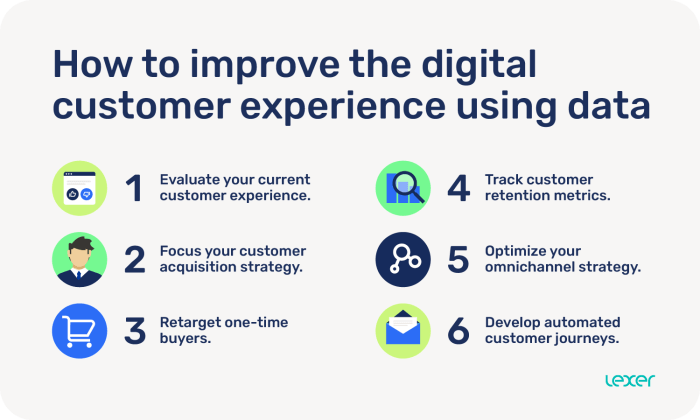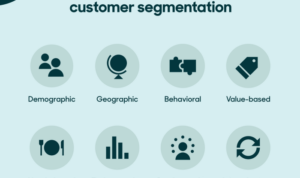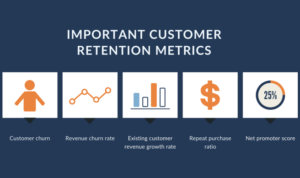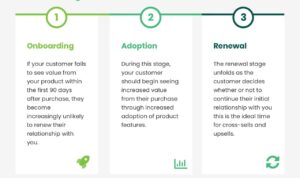Using Data to Improve Customer Experience sets the stage for businesses to thrive by diving deep into the power of data-driven strategies. Get ready to explore how data can revolutionize customer satisfaction and give brands a competitive edge.
Importance of Using Data to Improve Customer Experience
Data plays a crucial role in enhancing customer experience by providing valuable insights into customer preferences, behaviors, and needs. By analyzing data effectively, businesses can tailor their products and services to meet customer expectations, ultimately leading to higher levels of satisfaction and loyalty.
Examples of Data-Driven Success
- Amazon utilizes customer purchase history and browsing behavior to recommend personalized product suggestions, leading to increased sales and customer engagement.
- Netflix uses data on viewing habits to recommend movies and TV shows to users, enhancing the overall viewing experience and retention rates.
- Starbucks leverages data from its loyalty program to offer personalized promotions and rewards, driving customer loyalty and repeat business.
Competitive Advantage Through Data-Driven Strategies
Data-driven strategies can provide businesses with a competitive edge in the market by enabling them to anticipate customer needs, optimize marketing campaigns, and improve overall customer satisfaction. By leveraging data effectively, companies can stay ahead of competitors, attract new customers, and retain existing ones.
Collecting Relevant Data for Enhancing Customer Experience
To enhance customer experience, it is crucial to collect relevant data that provides insights into customer behavior and preferences. By utilizing various sources of data and effective data collection methods, businesses can tailor their strategies to meet customer needs more effectively.
Sources of Data for Understanding Customer Behavior
- Customer Feedback: Gathering feedback directly from customers through surveys, feedback forms, and reviews can provide valuable insights into their preferences and satisfaction levels.
- Social Media Monitoring: Monitoring social media platforms allows businesses to track customer sentiment, engagement, and feedback in real-time.
- Website Analytics: Analyzing website traffic, click-through rates, and user behavior on the company website can help identify trends and preferences.
- Customer Service Interactions: Monitoring customer interactions with customer service representatives can reveal common issues or areas for improvement.
Effective Data Collection Methods, Using Data to Improve Customer Experience
- Surveys: Conducting surveys to gather feedback on products, services, and overall customer experience.
- Feedback Forms: Providing customers with easy-to-use feedback forms to collect their opinions and suggestions.
- Social Media Monitoring Tools: Utilizing tools to track mentions, comments, and reviews on social media platforms.
Importance of Data Accuracy and Integrity
Ensuring data accuracy and integrity is essential in the data collection process to make informed business decisions. Inaccurate or incomplete data can lead to misguided strategies and ineffective customer experience improvements. By maintaining data accuracy and integrity, businesses can rely on trustworthy information to enhance customer satisfaction and loyalty.
Analyzing Data to Gain Insights: Using Data To Improve Customer Experience

When it comes to improving customer experience, analyzing data plays a crucial role in extracting valuable insights that can drive business decisions and strategies.
Utilizing Data Analytics Tools
- Businesses can leverage data analytics tools such as Google Analytics, CRM systems, and customer feedback platforms to identify patterns and trends in customer behavior.
- These tools help businesses track customer interactions, preferences, and purchasing behaviors to understand what drives customer satisfaction and loyalty.
- By analyzing the data collected from various touchpoints, businesses can optimize their marketing campaigns, product offerings, and overall customer experience.
The Role of Data Visualization
- Data visualization techniques such as charts, graphs, and heat maps play a key role in interpreting complex data sets for improving customer experience.
- Visual representations of data make it easier for businesses to identify trends, outliers, and correlations that may not be apparent from raw data.
- Through data visualization, businesses can communicate insights effectively to stakeholders and make data-driven decisions that enhance the overall customer experience.
Personalizing Customer Experience through Data
In today’s digital age, businesses have the opportunity to leverage data to create personalized experiences for their customers. By analyzing customer data, companies can tailor their marketing strategies to meet the individual preferences and needs of each customer, ultimately enhancing customer satisfaction and loyalty.
Examples of Personalized Marketing Campaigns
- One example of a personalized marketing campaign is when a clothing retailer sends out targeted emails featuring recommended products based on a customer’s past purchase history. This personalized approach increases the likelihood of converting leads into sales.
- Another example is a streaming service that curates personalized playlists and recommendations for users based on their listening habits. By analyzing data on user preferences, the platform enhances the overall user experience and keeps customers engaged.
Impact of Personalized Recommendations
- Personalized recommendations have a significant impact on customer satisfaction and loyalty. When customers feel that a company understands their preferences and caters to their needs, they are more likely to remain loyal to the brand and make repeat purchases.
- Studies have shown that personalized recommendations can lead to a higher conversion rate and increased customer engagement. By providing relevant product suggestions or content recommendations, businesses can create a more tailored and enjoyable experience for their customers.
Implementing Changes Based on Data Insights

Businesses can utilize data-driven insights to strategically enhance customer experience by:
Importance of Agility in Responding to Customer Feedback and Data Analysis
- Adapting quickly to changing customer preferences and market trends.
- Responding promptly to customer feedback to address issues and improve satisfaction.
- Utilizing real-time data analysis to make informed decisions and adjustments.
Examples of Successful Implementation of Changes Based on Data-Driven Insights
-
Amazon’s recommendation system, which suggests products based on customer browsing and purchasing history.
-
Netflix’s personalized content recommendations, tailored to individual viewing habits and preferences.
-
Starbucks’ mobile app features that offer personalized promotions and rewards based on customer behavior.





